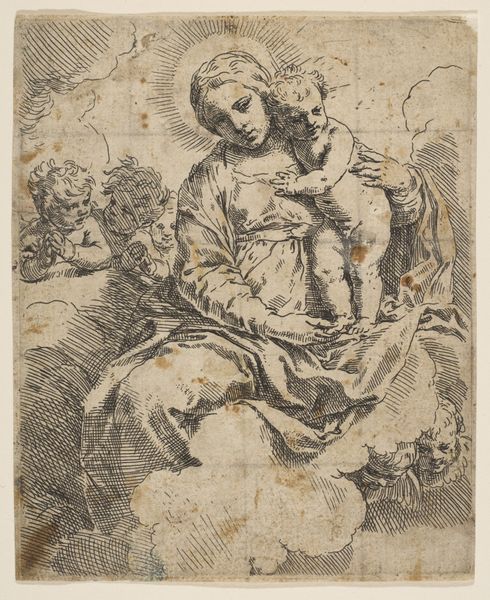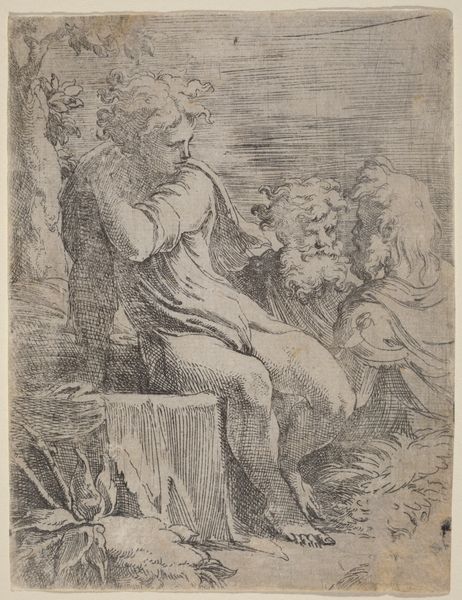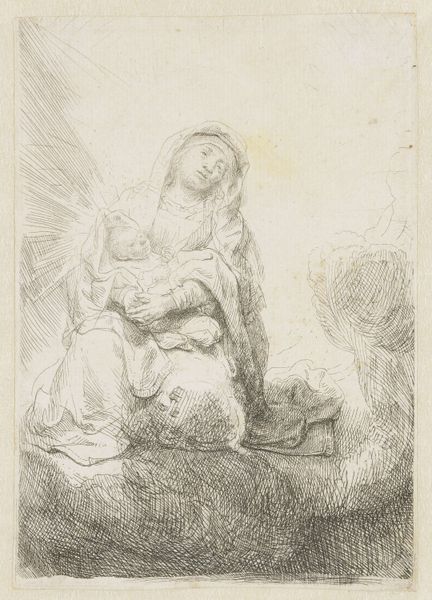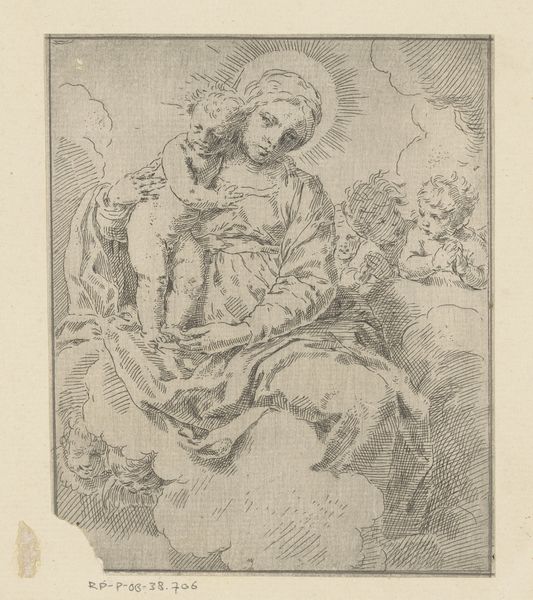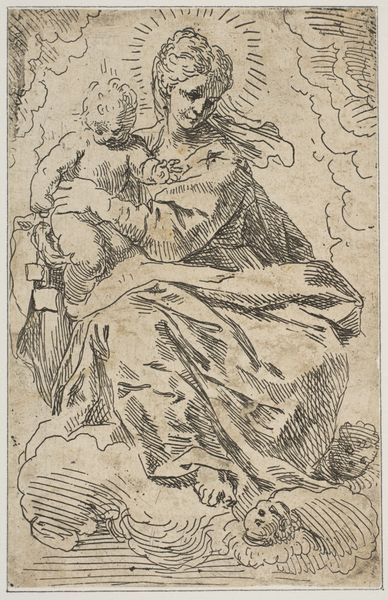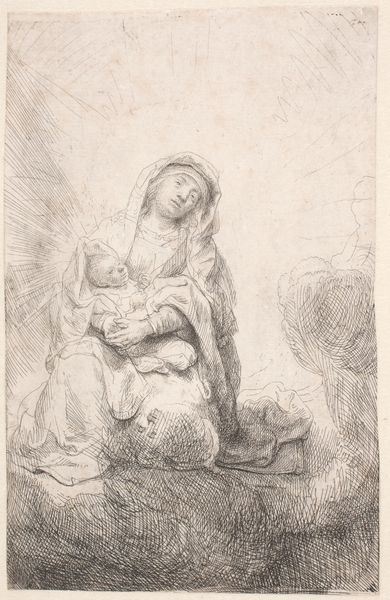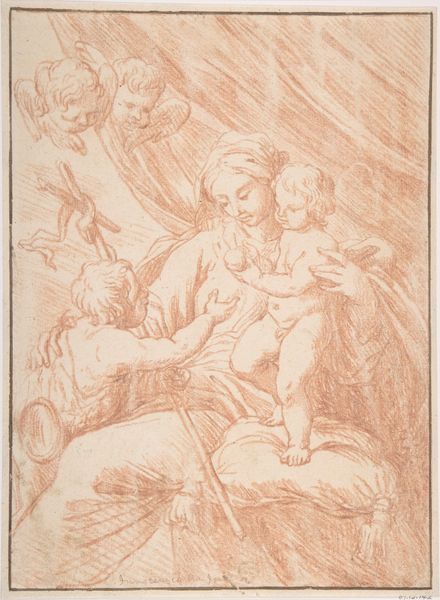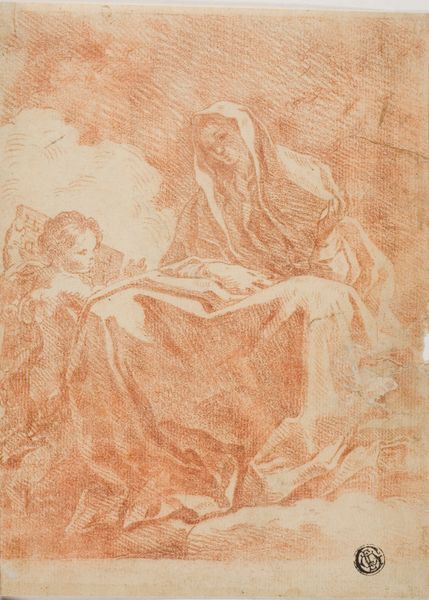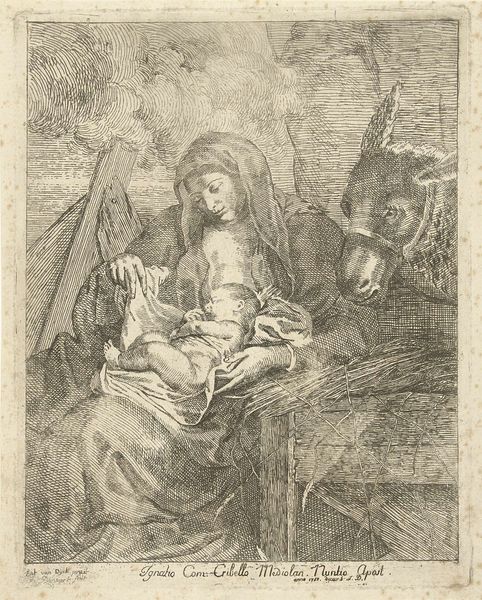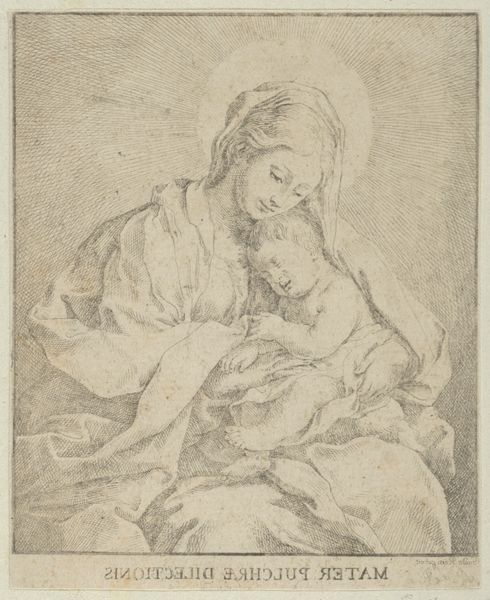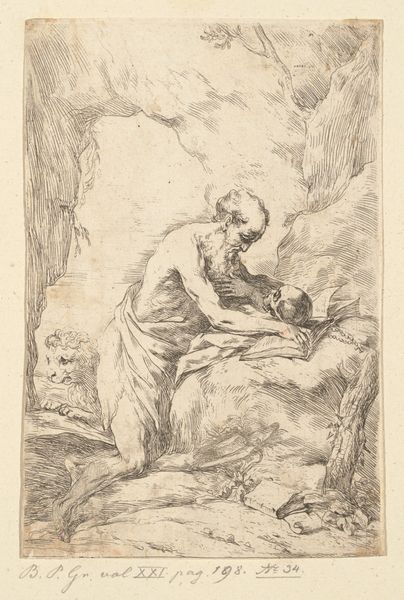
Madonna and Child seated on clouds and surrounded by angels, copy in reverse after Cantarini 1612 - 1648
0:00
0:00
drawing, print, engraving
#
drawing
# print
#
figuration
#
form
#
line
#
history-painting
#
italian-renaissance
#
engraving
Dimensions: Sheet (Trimmed): 5 9/16 × 4 1/2 in. (14.1 × 11.5 cm)
Copyright: Public Domain
Curator: Here we have "Madonna and Child seated on clouds and surrounded by angels, copy in reverse after Cantarini," a drawing/print dating back to sometime between 1612 and 1648. Editor: My initial impression is of remarkable detail achieved through line work. The way the engraver used line density to model form and create shadows is really striking. Curator: Indeed. The piece invites us to consider the religious and cultural landscape of the Italian Renaissance. This particular Madonna, depicted enthroned in the heavens, reflects a period where the feminine divine was crucial in art. How do you read her expression, in conjunction with those of the angels? Editor: Her downcast gaze and gentle posture towards the child suggest humility and a sense of protectiveness, but, thinking of labor, these depictions of the Madonna often neglect the sheer physical toil of motherhood. How were such prints circulated, and by whom? What socio-economic access did such works afford its audiences? Curator: This print would likely have circulated among the educated elite, primarily wealthy merchants and members of the clergy, reinforcing not only devotion but also their societal status through patronage of the arts. Moreover, how do these compositions portray gender and the role of women, perpetuating, even sanctifying, domestic ideals while denying broader freedoms? Editor: The very act of reproduction through engraving hints at broader issues. It makes me think about the consumption and dissemination of images, as well as the labor required to create this piece; all those precise lines would take a considerable amount of time. This challenges the notion of the artist as solitary genius, forcing us to also consider production networks. Curator: It really illuminates how art and belief were intertwined. Analyzing works like this print demands we confront uncomfortable questions about power, privilege, and representation. Editor: By digging into its production and how it was consumed, we expose the networks through which meaning itself was constructed and, I suppose, commodified.
Comments
No comments
Be the first to comment and join the conversation on the ultimate creative platform.
